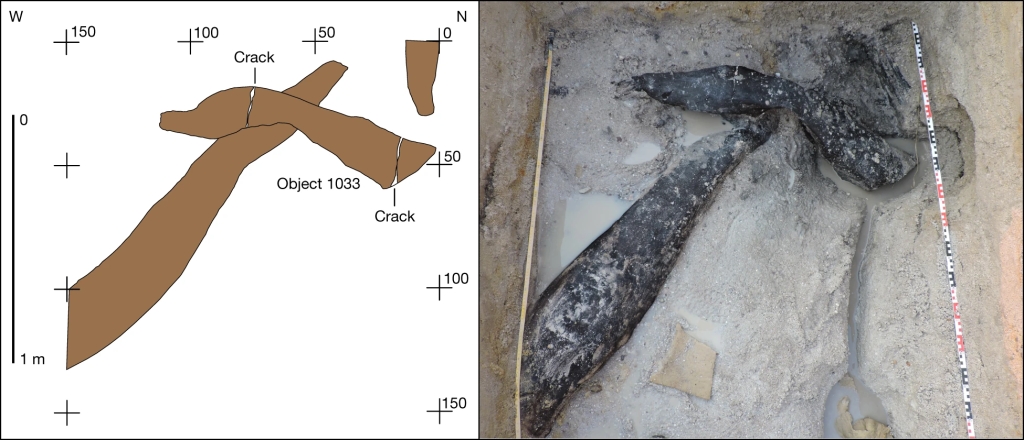The longest ‘age’ in human history is the first, called the Palaeolithic or Old Stone Age. It starts with the oldest stone tools we have found so far, from Lomekwi in Kenya, which are 3.3 million years old. The age ends with the beginning of the Mesolithic or Middle Stone Age in the Middle East about 20,000 years ago.
A recent discovery in Africa, however, suggests we’ve got the title wrong. It shouldn’t be the Old Stone Age, but the Old Wood Age.
Wood does not preserve well, especially compared to bone and stone, so there is little evidence for its use in the palaeoanthropological record, and what evidence there is often inferred by small cuts or nicks.
However, in an article[i] published in Nature in September last year, Barham et al describe the discovery of the first structural use of wood predating the arrival of Homo sapiens by at least 100,000 years. Waterlogged deposits at Kalambo Falls in Zambia preserved ‘two interlocking logs joined transversely by an intentional cut notch.’

The logs, made from bushwillow, were dated by luminescence to be 476,000 years old, give or take 23,000 years.
It’s a remarkable discovery, and confirms that our ancestors (in this case probably H. heidelbergensis[ii]), were as adept at using and shaping wood as they were at using and shaping stone. Given the preponderance of wood in the environment compared to usable stone, and given its comparative softness and adaptability, this doesn’t come as a surprise, but nonetheless it’s nice to have some demonstrably worked specimens.
Wood was almost certainly the first product hominins used to make tools, from scrapers to spears. Indeed, it may have been the dominant raw material for toolmaking throughout most of human history.
So maybe the first human ‘age’ should be referred to as the Old Wood Age, with stone making the occasional guest appearance?